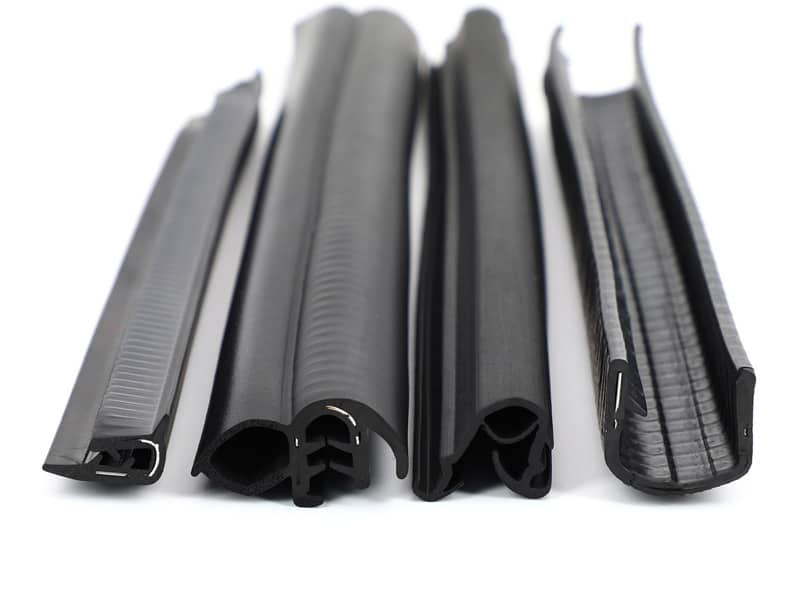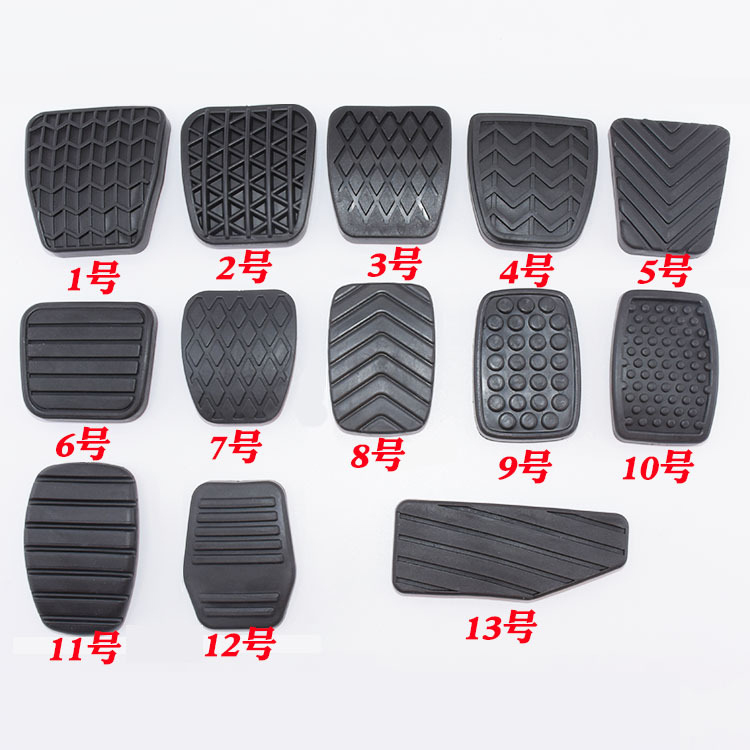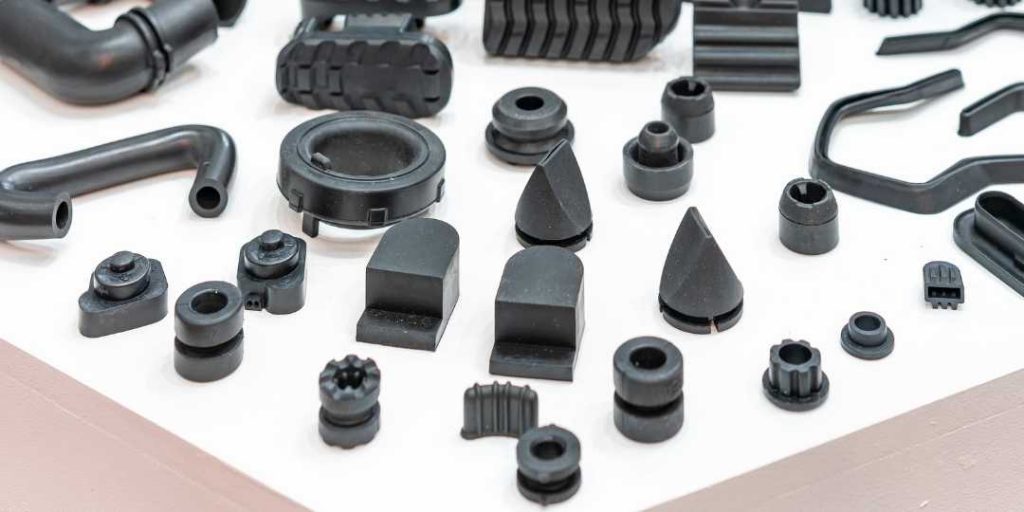About EPDM – Molded Rubber Parts and EPDM Seals
EPDM stands for Ethylene-Propylene-Diene-Monomer and is a type of synthetic rubber characterized by many applications. As its name denotes, EPDM is a terpolymer of ethylene, propylene, and a diene component. The specific diene component used in EPDM varies depending on the desired properties, but some common dienes are dicyclopentadiene (DCPD), ethylidene norbornene (ENB), or vinyl norbornene (VNB).
In the 1960s, companies tried to produce unique synthetic elastomers, specifically UV-resistant rubber that would not degrade as natural rubber does outdoors for extended periods. EPDM was developed as a result and was a very successful invention as it is UV-resistant and provides an excellent alternative to natural rubber. EPDM’s resistance to weathering is the material’s defining feature that sets it apart from other rubbers.
EPDM is usually produced via polymerization in solution technique. One of the steps is vulcanization, a chemical process to convert polymers into more durable materials by introducing crosslinks in the polymer chain. EPDM is typically vulcanized with sulfur; however, vulcanization can also occur using peroxides when sulfur-free rubber is required. Additionally, different additives or materials can be used during EPDM manufacturing to provide the desired physical properties; for example, food-grade EPDM can be produced using FDA-approved ingredients for food processing operations.
Like most rubbers, EPDM can be manufactured in many forms, such as seals, profiles, strips, or molded rubber parts. EPDM rubber can be used in various manufacturing processes, including compression molding, transfer molding, rubber injection, rubber extrusion, and rubber-to-metal bonding.

EPDM Advantages and Uses – Molded Rubber Parts and EPDM Seals
EPDM rubber is an extremely versatile material used in various applications due to its desirable physical properties. Below are some of the key benefits of EPDM rubber.
- Excellent Ozone and UV resistance: EPDM exhibits outstanding resistance to ozone and UV and retains its color, making it preferable over natural rubber and a great choice for outdoor applications.
- Great tensile strength: EPDM does not tear easily, making it advantageous over silicone rubber.
- Wide temperature range: EPDM has a broad range of operating temperatures compared to many of its competitors, such as Neoprene rubber and Nitrile Butadiene Rubber (NBR) which are limited to low-temperature operations.
- High chemical resistance: EPDM has good resistance to many chemicals such as anti-freeze, synthetic detergents, acetone, boric acid, ethanol, formaldehyde, mercury, saccharin, and steam. Note that EPDM is not recommended for use with petroleum-based products.
- Strong water and weather resistance: EPDM does not stain, mildew, or warp due to water or weather exposure.
Low electrical conductivity

In addition to its desired properties, EPDM is often a lower-cost option since it lasts long without breaking down – saving time and money on replacement parts. These qualities, especially it’s resistance to ozone and UV, make EPDM rubber popular for use in industrial settings, such as seals, plugs, and gaskets, as well as in automobiles, roofing, and HVAC systems. EPDM is also used in indoor applications such as refrigerators.
EPDM OEM Solutions – Molded Rubber Parts and EPDM Seals
If you were to pop open the hood of your vehicle, chances are you’d be able to find one of EPDM components. One of our most common parts is non-conductive EPDM A/C line grommets. These grommets are developed by pulling out the carbon black, helping prevent galvanic corrosion. That’s just one example of many EPDM solutions. Other examples include:
- EPDM Body Panel Plugs: Offering better sealing and NVH qualities compared to butyl foil patches and plastic plugs
- Door Seals: Preventing air and liquid from escaping or entering the vehicle, as well as having secondary NVH applications
- Boots & Bellows: Flexible and a great option for preventing dirt, dust, and debris from entering vital components
- Air Intake Ducts: Flexible connecting devices used to connect the air intake manifold to the air filter box
- Fuel Tank Pads: Used to separate the fuel tank from the vehicle’s body and reduce NVH
About Us:
Hebei Shida Seal Group is a leading manufacturer of EPDM rubber seals, EPDM rubber extrusions, extruded EPDM rubber parts and molded rubber parts from Qinghe, Hebei, China. With combined experience within the industry, we have developed the talent, technical knowledge, engineering expertise and equipment to manufacture rubber extrusions meeting the most stringent specifications. Our in-house tool and mould making as well as state-of-the-art development, manufacturing and testing methods ensure a maximum of product quality and reliability.
Capabilities:
- Certified to IATF (international Automotive Task Force) 16949,
- Certified to ISO 14001 and ISO 45001 (Environment, Health and Safety)
- Production area 40,000 m²
- Processing of: EPDM Dense and Sponge, CR, NBR
- 5 continuous vulcanization (microwave + hot air ) extrusion lines
- 2 components extrudable
- 3 components extrudable
- Cutting and punching machines for precise lenghts
- Injection presses for mould corners
- Film vulcanization for corners and rings
Main Products:
- Custom Rubber Extrusions and Profiles
- Automotive Weatherstripping, Door Seals, Window Seals
- Edge Trims & Seals,Self-Sealing Weatherstrips
- Window Channels, Flocking and Urethane Slip-coating
- Engineered TPV/TPE Profiles
- Co-extruded Trim Seals (dual durometers with a Metal Core, Segmented Steel or Wire Carrier)
- Molded Rubber Parts, Grommets, Plugs and Gaskets
Contact Us:
If your applications require EPDM Rubber Seals and Gaskets, please feel free to contact us. We are committed to supplying our customers with robust rubber components and outstanding services.

